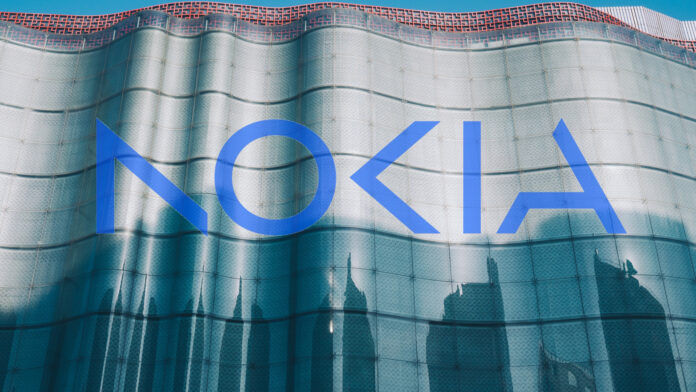Nokia has released a cut-down version of its Digital Automation Cloud (DAC) private-cellular product for small-and medium-sized enterprises (SMEs) in the industrial sector. Called DAC Compact, the new solution claims a smaller form factor to deliver LTE/5G coverage at smaller sites. The Finnish firm is offering it with zero upfront investment on a subscription (as-a-service); it is promising “fast delivery”.
Nokia is selling the solution in the US initially, to attach to private LTE and 5G networks in the CBRS band; it is available now via the firm’s private-wireless reseller and system integrator partners, including DXC Technology, Future Technologies Venture, Graybar, and Trilogy NextGen. Nokia said customers can choose from one of three “predefined configurations” for fast delivery.
The SME market has always been the next frontier for the nascent private LTE/5G market, marking its progress as an accepted and requested enterprise technology. The telecoms market would likely suggest it shows the technology is proven and mature, but this is a stretch, still, especially in the demanding Industry 4.0 market – given the work to do with standards, devices, and costs.
Still, Nokia’s move on the SME-end of the harder-nosed Industry 4.0 market also suggests its leadership position in the private LTE/5G game – as an agitator brand looking to spread the word, make the sales, and accelerate innovation. The common perception is that the SME market, at large, will be served by cloud-based private 5G products from cloud providers like AWS and Microsoft.
But Nokia is staying more or less away from that particular theatre of war, which will likely focus on warehousing, retail, hospitality, and other high-street / business-park sectors. It is not so clear-cut, of course; but Nokia is nominally putting focus instead on the intensive demands of critical industries like discrete / process manufacturing, logistics, utilities, oil and gas, mining, and agriculture.
The SME market, typically defined to comprise firms with less than $100 million in turnover and fewer than 200 staff, makes up the lion’s share of the economic market. They account for over 95 percent of firms and up to 70 percent of employment, according to the Organisation for Economic Co-operation and Development (OECD). Other statistics differ.
The US Small Business Administration (SBA) says SMEs make up 99.9 percent of all US businesses and 47.1 percent of the private workforce; the UK government says 99 percent of privately owned businesses are SMEs, accounting for 60 percent of private sector jobs. Manufacturing, logistics, and construction are major employers of SMEs in global markets.
Nokia called its new DAC Compact product, based on its AirScale small cells, a “cost-effective connectivity option for small industrial premises” and the “most economical entry point to Industry 4.0” for industrial SMEs. It claimed a ruggedised casing for use in the “toughest industrial environments” and a 60 percent reduction in energy consumption versus Wi-Fi systems.
It quoted statistics from ABI Research that the logistics sector is “forfeiting upwards of $664 million in annual revenue [which] private cellular… could help to realise”. It suggested warehouses, in particular, could improve “handover failures, parcel losses, and tracking issues” with private cellular – on the grounds it penetrates “metal shelves and coverage holes” better than Wi-Fi.
Nokia also cited “ports, manufacturing, mining, [and] petrochemical” among its target sectors; it also referenced retail, which falls outside of the traditional Industry 4.0 catch-all segment, but remains a target, arguably, while cloud providers and mobile operators organise themselves. Nokia flagged an “easy upgrade path” to add capacity, users, and radio configurations, as well as Wi-Fi technology.
Its Mission Critical Industrial Edge (MXIE) is positioned as a future Industry 4.0 staging post for enterprises starting with the sripped-down version of DAC. “Enterprises can transform their private wireless solutions to a full platform for digital transformation thanks to the MXIE capabilities and its selection of Nokia and third-party OT use case applications,” it said.
A statement said: “It is easy to use with plug-and-play deployment and IT native operability, and provides configurations for indoor, outdoor, and mixed radio coverage. Larger enterprises deploying the Nokia DAC PW Compact in small facilities will have the confidence of a single multi-site private wireless solution deployed across all their campuses.”
Leo Gergs, principal analyst at ABI Research, said in the Nokia statement: “Cost is [the] main factor for deciding which connectivity technology to deploy. [This will be] very competitive… to technologies like Wi-Fi. [It] will be an important building block for Nokia and its channel partners to create a value proposition around private cellular that is easy to understand and digest for enterprises.”
Stephan Litjens, vice president of enterprise campus edge solutions at Nokia, said: “We can now address the growing demand from smaller sites and many industries, such as the growing warehousing segment, which needs the secure, low-latency and reliable connectivity provided by private wireless to digitally transform their operations.”

